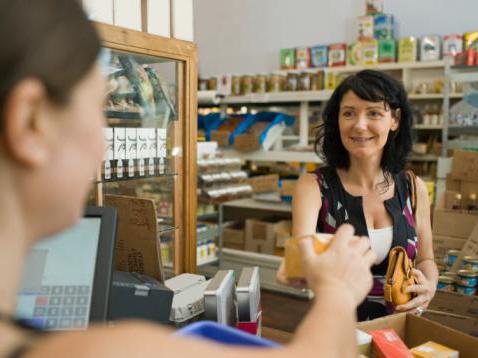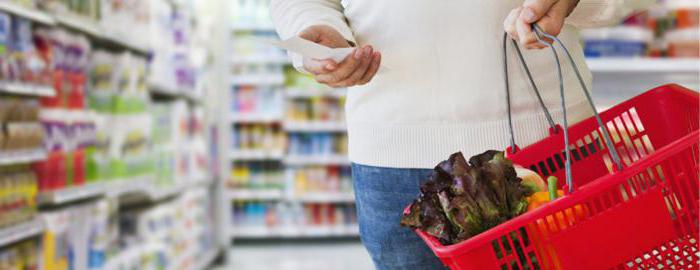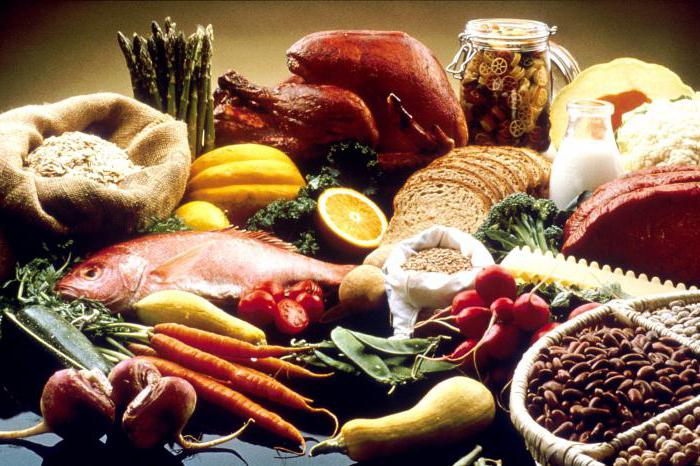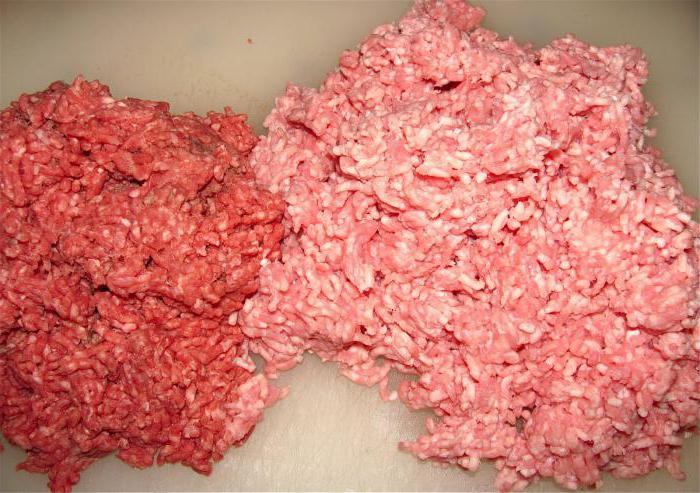Particularly perishable products. Perishable products
Most families spend up to 50% of their income on food, if you make a rough estimate. In addition, you need to pay utility bills, transport, and all other mandatory items. And in the end - again no money. And the circle is closed, because every time the situation repeats itself. But there is a solution: the most significant expense item can be reviewed and understood that the list of products for the month and other really necessary goods can significantly save a significant part of the budget.
How does the “dispersal of funds” work?
We often go to the grocery store. This is inevitable, because nutrition is a primary human need. But how do we do it? We allocate a day or part of it, take a bundle of money or a card with all the savings on it, go to the supermarket and humbly follow the route that marketers have laid out for us. Of course, we collect along the way everything that is needed and not needed. Pleasant music and aromas from the counters beckon to put more and more into the basket, this and that. At the exit, when parsing the basket, sometimes we begin to doubt: why did I take this? But no one wants to go and take "it" back. As a result, we get up to 70% of the total mass of “extra products”, and the overpayment for them reaches 100% of extra rubles. So a significant part of our family budget.
Sometimes, of course, you want to buy products “for the soul”, and this needs to be done, but it is important to know the measure and understand when to stop. To do this, there are several simple ways to reduce monthly expenses without losing nutritional quality.
Cunning tricks
As you know, demand creates supply, but sometimes it happens that the latter is not so in demand. For Food Industry this is especially characteristic: enterprises produce more and more new types of products, both useful and unhealthy, but it is not always possible to sell the goods produced on time. This results in losses either for the plant or for the seller. To stimulate sales and prevent spoilage of all sorts of things, stores and businesses create different offers which are difficult to refuse.
- Stock. When they are held, they often either reduce the prices of products, or offer to buy 2 and get 1 product as a gift. Many fall for this trick: while it's cheap, you have to take it. But is what you buy always necessary? You can, of course, take something “on the hunt”, but you should not buy everything in a row that the offers apply to. A promotion can also be useful: if you need a specific item, such as a pack of butter or a pack of sugar, why not get them at a discounted price?
- Sales. Usually in this way they get rid of products whose expiration date is at the limit or ends in the next month or two. There is the same recommendation here: if the product does not raise doubts that you will use it in the near future, and it will not have time to deteriorate, take it, but consider the quantity. Also, sales are arranged when a store purchases a large batch of something.
- Thoughtful structure of the supermarket hall. It's an art to get the customer to fill the basket with different products before he gets to the important shelf with bread, milk or meat.
- Selling at a speculative price periodically held in our time, and such events have an incredible success. You can remember how quite recently buckwheat cost about 100 rubles / kg. It would seem, who will take? But the people of the generation that caused the war and famine literally swept it off the shelves. Many were driven by fear that it would be even more expensive in the future.

Taken together, these activities are enormously enriching the seller and drain your budget, especially if you have an active consumer psychology.
There is an exit
To stop constantly buying junk and start saving, make it a habit to make a grocery list for a month or a week. Practice shows that people who know what they came to the store for rarely gain too much. To do this, it is enough to make a list of food products that need to be purchased. It would seem that a simple piece of paper, but it works flawlessly and, if it does not exclude unnecessary products in the basket, then it reduces their number to a minimum.
In addition, go to the supermarket after eating - this way you will not think about hunger, but fill the baskets with only the necessary goods.
How to compose
Of course, for each family the list of consumed products is different. in a universal way transfers for everyone can become a regular sheet of paper attached to the refrigerator with a magnet. For the first time, go around all your stocks, make a list of everything that is missing: food, household items. With such a list, go to the store or the market and fill your bins with everything you need.
Then just get into the habit of immediately writing down your needs: half a bottle of oil left - recorded, pasta is running out - on the list. Etc. Thus, you can not only buy products according to the list, but really buy what you need.
If you need to save, sign up approximate prices on products, study the cost of goods in different outlets. Advertising signs, TV ads, handing out leaflets - you can find out about the availability of shares everywhere.
On the eve of holidays and large feasts, think over the menu in advance, add the necessary items to the list. 
There is a modern alternative to the paper list - smartphone apps also allow you to make lists. You definitely won’t forget this one at home, but how convenient is it to fill it? Perhaps it just takes getting used to.
Take a look in the fridge
It often happens: a tail of sausage was left after breakfast, packed it and put it in the refrigerator. Then we went to the store and bought fresh. Of course, the rest was safely forgotten. And this happens everywhere - in almost every refrigerator you can find products that have already been forgotten, and they have become unsuitable for food: trimmings or whole pieces of cheese, fruits / vegetables, jars with blanks, bottles with sauces. In other words, everything related to perishable products and not subject to long-term storage.
A common consumer mistake: I’ll take more and eat deliciously. But either they don’t have time to eat, or the product bothers. And the purchases of such items do not stop.
Conduct a periodic audit of the refrigerator: this is where perishable items of the diet are stored. Determine what is no longer in demand, and stop buying this product.
Make a monthly diet
Monthly expenses can be significantly reduced if you know which products you need to buy and which you should refuse not only to save money, but also to maintain health. There is a basic list of products for a month that must be present in the hostess's kitchen. They can be divided into groups:

This is a basic list of products, the presence of which will allow you to cook a variety of healthy dishes. Of course, not every family is in demand for buckwheat, somewhere they do not eat onions or potatoes. Therefore, there is no single list for all.
And it's okay if something was not taken into account when compiling the list - you can always buy what you need, because you will not go for bread only once a month.
Make blanks
Many products for subsequent cooking can be made independently, they will be much more useful and safer than factory ones: manufacturers almost everywhere use flavoring additives and seek to reduce the cost of semi-finished products by including additional, cheaper components, such as meat and meat products. Cutlets, meatballs, minced meat, meatballs - all this is sold at a price higher than a kilogram of fresh raw materials, lower only in cases where the composition is highly diluted. Therefore, meat products can be prepared independently from a single piece purchased in point of sale: by purchasing the product once and spending time on processing, you have freezer the whole arsenal of favorite semi-finished products, while knowing what it all consists of. 
Many manage to prepare vegetable and meat broths, having previously cooked and cooled them. The idea is great: in situations where you need to cook something quickly, these products are just a lifesaver!
Of paramount importance for maintaining quality and safety in the sale of food products, especially perishable ones, are the conditions for their storage.
 Products that require special temperature regimes to ensure safety, without which they can lead to harm to human health, are considered perishable and especially perishable, they must be stored in cold conditions and are intended for short-term sale.
Products that require special temperature regimes to ensure safety, without which they can lead to harm to human health, are considered perishable and especially perishable, they must be stored in cold conditions and are intended for short-term sale.
Taking into account the sanitary and epidemiological rules and regulations SanPiN 2.3.2.1324-03 " Hygiene requirements to expiration dates and storage conditions food products"designed in accordance with federal laws"On the sanitary and epidemiological well-being of the population" dated 30.03.1999 No. 52-FZt and "On the quality and safety of food products" dated 02.01.2000 No. 29-FZ, "Mariholodmash" designed and produces a range of THO, which is most suitable for storage and sale of especially perishable and perishable products.
Especially perishable products include: milk, pasteurized cream; chilled semi-finished products from meat, poultry, fish, seafood, raw and boiled vegetables, all products and dishes Catering; freshly squeezed juices; cream confectionery products made using manual operations; perishable products in packages opened during the sale.
Perishable products include: products of milk processing, fish and non-fish products, eggs, meat, poultry, incl. boiled sausages; flour creamy confectionery products with a mass fraction of moisture of more than 13%; creams and finishing semi-finished products, incl. on the vegetable oils; the drinks; vegetable processing products; fatty and fat-containing products, incl. mayonnaises, margarines; quick frozen ready meals and semi-finished products; all types of preserves; thermized fermented milk products and sterilized dairy products.
This SanPiN establishes the following storage temperature regime for especially perishable and perishable products, this is (4 ± 2) ° С, except for chilled fish and fish fillet (0 - minus 2) ° С, minced fish, special cut fish and multi-component culinary caviar dishes without heat treatment after mixing (from minus 2 to 2)°С.
To commercial refrigeration equipment, which was developed by "Mariholodmash" specifically for especially perishable and perishable products and which provides the above temperature conditions, all universal cases, medium-temperature universal show-windows of the Tair 1221, Ilet and Nova series belong. The temperature in the refrigerated volumes of these products is regulated in the following ranges: for universal cabinets and multi-purpose display cases of the Tair1221 series - (from minus 6 to 6) ° С, for multi-purpose display cases of the Ilet and Nova series - (from minus 5 to 5) ° С. Medium-temperature refrigerated display cases, which have an adjustable temperature in the refrigerated volumes in the range (from 0 to 7) ° C, also provide storage modes for perishable and highly perishable products.
Of paramount importance for maintaining quality and safety in the sale of food products, especially perishable ones, are the conditions for their storage.
Products that require special temperature regimes to ensure safety, without which they can lead to harm to human health, are considered perishable and especially perishable, they must be stored in cold conditions and are intended for short-term sale.
Taking into account the sanitary and epidemiological rules and regulations SanPiN 2.3.2.1324-03 "Hygienic requirements for the expiration dates and storage conditions of food products", developed in accordance with the Federal Laws "On the sanitary and epidemiological welfare of the population" dated March 30, 1999 No. 52- FZT and "On the quality and safety of food products" dated 02.01.2000 No. 29-FZ, "Mariholodmash" designed and produces a range of THO, which is most suitable for the storage and sale of especially perishable and perishable products.
Especially perishable products include: milk, pasteurized cream; chilled semi-finished products from meat, poultry, fish, seafood, raw and boiled vegetables, all foodstuffs and public catering dishes; freshly squeezed juices; creamy confectionery products made using manual operations; perishable products in packages opened during the sale.
Perishable products include: products of milk processing, fish and non-fish products, eggs, meat, poultry, incl. boiled sausages; flour creamy confectionery products with a mass fraction of moisture of more than 13%; creams and finishing semi-finished products, incl. on vegetable oils; the drinks; vegetable processing products; fatty and fat-containing products, incl. mayonnaises, margarines; quick-frozen ready meals and semi-finished products; all types of preserves; thermized fermented milk products and sterilized dairy products.
This SanPiN establishes the following storage temperature regime for especially perishable and perishable products, this is (4 ± 2) ° С, except for chilled fish and fish fillet (0 - minus 2) ° С, minced fish, special cut fish and multi-component culinary caviar dishes without heat treatment after mixing (from minus 2 to 2)°С.
Commercial refrigeration equipment, which was developed by "Mariholodmash" specifically for especially perishable and perishable products and which provides the above temperature conditions, includes all universal cabinets, medium-temperature universal showcases of the Tair1221, Ilet and Nova series. The temperature in the refrigerated volumes of these products is regulated in the following ranges: for universal cabinets and multi-purpose display cases of the Tair1221 series - (from minus 6 to 6) ° С, for multi-purpose display cases of the Ilet and Nova series - (from minus 5 to 5) ° С. Medium-temperature THW, which has a controlled temperature in the refrigerated volumes in the range (from 0 to 7) ° C, also provides storage modes for perishable and highly perishable products.





